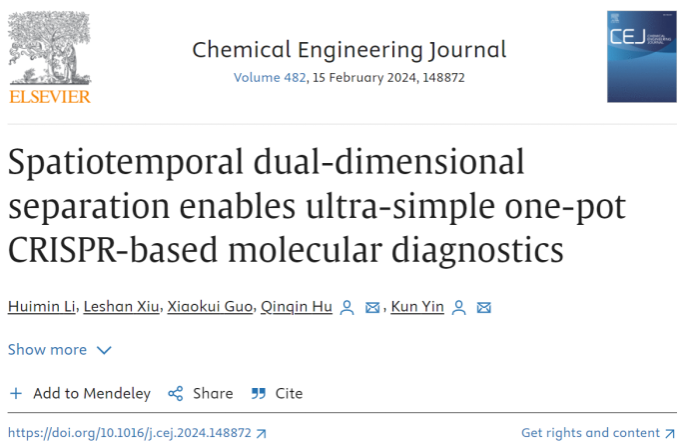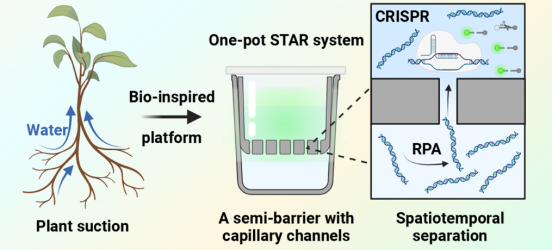The article Spatiotemporal dual-dimensional separation enables ultra-simple one-pot CRISPR-based molecular diagnostics in Chemica Engineering Journal by Professor Kun Yin’s Lab of Shanghai Jiao Tong University School of Medicine on January 16, 2024, developed a SpatioTemporal dual-dimensional sepAration-based CRISPR/Cas detection (STAR) system for simple and sensitive one-pot nucleic acid detection. In this study, a SpatioTemporal dual-dimensional sepAration-based CRISPR/Cas analysis system (STAR), to the best of our knowledge, is the first time established to achieve ultra-simple and sensitive RPA-CRISPR detection in a closed system. By providing a physical semi-barrier containing capillary channels in a tube-in-tube assembly, the STAR system successfully resolved the incompatibility of RPA and CRISPR/Cas12a, where two systems were physically isolated (spatial separation) and spontaneously connected as the amplification reaction proceeded (temporal separation). Compared with previous one-pot RPA-CRISPR detection systems, the established STAR system reacts without requirements of additional operation and additives. The STAR system was believed to effectively connect two incompatible reactions and enable simple, accurate, and sensitive nucleic acid testing.

Abstract:
Recently, CRISPR/Cas-based technology has shown great promise for nucleic acid-based molecular diagnostics. However, most established strategies reported two-step operations to achieve high sensitivity but carry the risk of aerosol contamination. Herein, we developed a SpatioTemporal dual-dimensional sepAration-based CRISPR/Cas detection (STAR) system for simple and sensitive one-pot nucleic acid detection, taking advantage of the capillary forces of 3D-printed inner tube which dynamically connects the recombinase polymerase amplification (RPA, inner tube) and CRISPR/Cas12a derived detection (outer tube). With RPA reaction proceeding, the spontaneously defused amplicons will activate the CRISPR/Cas12a reaction, lighting up the inner tube with glamorous fluorescent signals. Benefiting from spatiotemporal dual-dimensional separation, the STAR system not only can address the carryover contamination and incompatibility between two reactions, but also does not require for additional operations once assembled. Our STAR system has exhibited high specificity and sensitivity for the detection of Salmonella typhimurium in both broth and spiked milk samples with detection limits of 100 CFU/mL. With the outstanding performance, the developed STAR system has shown great potential for the development of next-generation point-of-care molecular diagnostics.

Link:https://www.sciencedirect.com/science/article/pii/S1385894724003577





